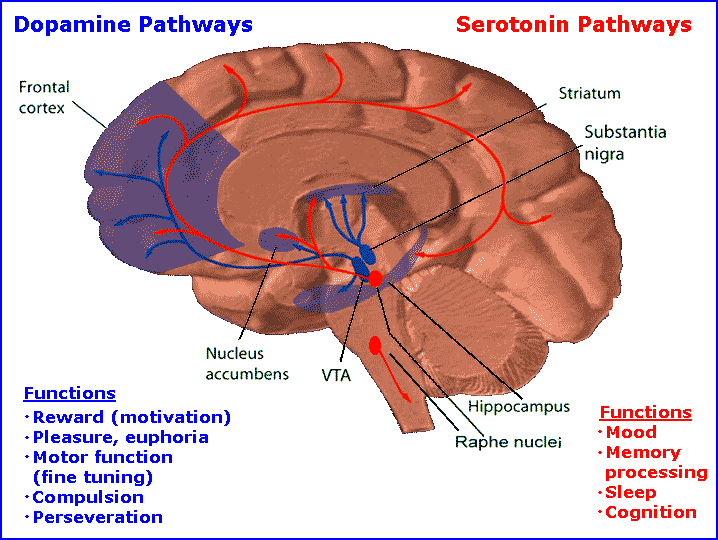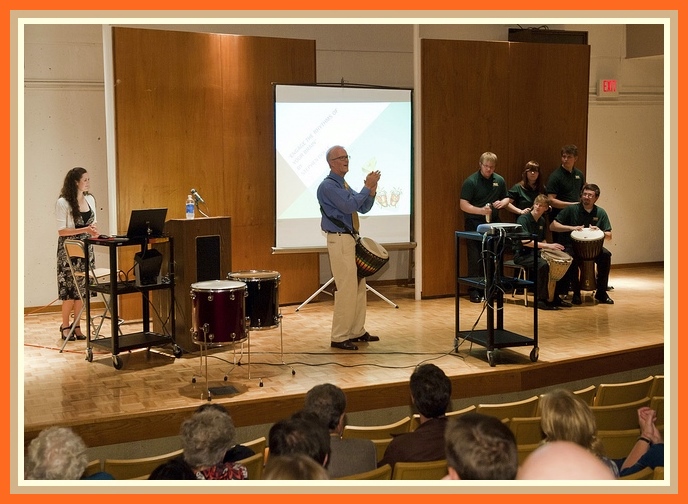
Nootropics and Brain Wave Biofeedback for Optimal Brain Health
Ordinarly, there’s more hype than substance in claims about vitamins. As part of a presentation on brain health and Alternative Medicine this past September at Sovereign Health in Orange County, I discussed the many alternative medicine modalities under Alternative Medicine and CAM (Complimentary and Alternative Medicine). In my analysis, I felt there was great promise in alpha-theta brain wave biofeedback and in Nootropics vitamins for the brain. Nootropics have been around for some time. But it’s only been in the last 10 years that neuroscience has been able to corroborate the claims. Many studies today corroborate which portions of the brain are responsible for which behaviors and skills.

I am personally pretty good about taking vitamins and more recently purchased a few of the vitamins in the class termed, “Nootropics,” or vitamins for the brain. Nootropics time has finally come, and I feel their interest is also fueled in part today by energy vitamins such as 5-hour Energy, and ADHD stimulant prescription drugs like Adderall.
One of the Nootropics pioneers is TruBrain who produces a popular brain performance concoction under the same name (www.Trubrain.com) that has garnished good reviews. There’s no hype to this product. It really does boost brain performance. But, it will run you upwards of $80-$125 per month.

Then I came across two blogs (inverted below) that discuss the individual Nootropic components in TruBrain. The 2nd blog even gives a detailed costs breakdown and finds there is about a 50% markup when buying TruBrain over the individual Nootropics when purchased separately.
What’s the Trtuth about TruBrain (by Neuroskeptic)?
Cost Analysis: TruBrain Proprietary Nootropic Blend vs. Generic Equivalent (by John Backus)
I examined the breakdown of components in TruBrain and noticed that it did not include ALL available recognized Nootropics. In particular, what are missing are Mucuna, 5-HTP, GABA, and L-Phenylalanine. I’ll get back to this later. The next step is in determining which Nootropics will be most beneficial to you.
How to Determine your Needed Nootropics
To understand your own needed Nootropics, I felt it critical to examine the various neurotransmitters or neurochemicals (as they are interchangeably called) and their role in brain function and brain performance. I’ve inserted a slide below that identifies ten (10) recognized neurotransmitters. I’m not convinced of its entire accuracy as it appears dated. But it provides a good overview. There’s also plenty of information available on web sites and vitamin pages (with detailed reviewer comments) such as Amazon.com. Amazon sells vitamins at some discount compared to my area Mother’s Market store. But, do your own comparison shopping.
I examining the individual neurochemicals of the brain, you should begin by making a list of known medical conditions for which you are currently receiving treatment, or have received treatment for in the past, plus a list of associated symptoms and complaints. Now look these complaints up on the “Neurotransmitters and their Effects” slide below, or one by one look up the various Nootropics on Google, or Nootropic product information/uses on Amazon.com, and write down the Nootropics you find may be connected to any medical conditions or deficiencies you have. Label this Critical Nootropics.
Next, make a list of brain performance characteristics you would like to improve about yourself. This could be performance qualities related to a job, or sports, or your personal life. Label this list Optional Nootropics.
Next, assemble a list of your current medications, and look up their contraindications and clashes with vitamins on this Drugs.com page. Write down any vitamins listed as having a possible conflict or contraindication on your medications.
Below is a link to neurochemicals (neurotransmitters) on wikipedia:

In deciding which Nootropics to individually buy, look up the Critical Nootropics on your list online say at Amazon.com. Amazon makes it very easy to navigate from Nootropic to Nootropic by clicking on the “Buyers also Bought” or “Similar Products” recommendations under each Nootropic, and write down a few words on each along with costs and dosage information. You can read reviews now, or wait til later. All you want to do at this phase is find your critical Nootropics, and get an idea of the typical strength, cost, and popular manufacturers.
Next, do the same for your Optional Nootropics. Now look over list of contraindicated vitamins and write an “X” over any that appear on either of your Nootropics list. The next challenge for you (as is for many of us) is which one’s can you afford? I think if you took all available Nootropics, you’d be shelling out upwards of $140 per month. The costs analysis blog by John Backus gives a nice breakdown and costs of the Nootropics in TruBrain, and then you can add the others I identify further below.
As a guide, the two most commonly supplemented neurochemicals are seratonin (for daytime mood & brain performance) and dopamine (your natural pain killer/mood tranquilizer). After these, come endorphins and cannabinoids which are produced during exercise, but can also be supplemented. Cannabinoids are reported to be found in different strengths of medical marijuana.
Now the typical reason(s) for taking Nootropics is to aid cognition, pain management, mood and happiness, sleep, and management of stress. It is refreshing to see true facts about vitamins. No need to hype. Nootropics do really work!

Best Nootropics for Brain Health
I have been taking a handful of Nootropics over the last few months along with good multi-vitamins without much noticeable benefit or change in my complaints. This included L-Glutamine, Acetyl L-Carnitine, L-Tyrosine, Turmeric, and COQ10.
The TruBrain blend contains: Piracetam, Choline (Citicoline), Acetyl L-Carnitine, EPA & DHA, Magnesium, Pramiracetam, L-Theanine, and Tyrosine.
I recently began taking Mucuno and 5-HTP – and noticed these helped mental clarity and acted as a mood enhancer/pain management. Next, I will add either of Citicoline or Piracetam (also taken with Pramiracetam) to help with cognition and memory.
Mucuna is reported to aid dopamine production (your brain’s natural pain killer), and 5-HTP is reported to aid the production of seratonin (critical in daytime brain function & mood). Citicoline, Piracetam, and Pramiracetam are reported in medical studies to aid cognition, mental focus, and memory.
If you Google any of these Nootropics today, you will find supporting studies from recognized medical institutions, something that has only come about in the past 1-2 years. Ginko Biloba is now moot today as a memory enhancer. And Omege-3s were reported to no longer prevent brain aging and dimentia. I’m not exactly sure what’s recommended now to ward off the effects from aging. Perhaps EPA and DHA as they are fatty acids.
Now the challenge is in determining which Nootropics you need versus what you can afford. For me, Mucuna and 5-HTP provided an excellent mood, pain relief, and energy boost. But I know that I must take a cell foundation Nootropic such as Acetyl L-Carnitine, and a cognitive enhancer Piracetam or Citicoline, or both. Tyrosine and Theanine are also foundation Nootropics and aid dopamine production, as does L-phenylalanine, which also aids dopamine and tryptophan in seratonin production. But use caution with L-phenylalanine as it is a strong stimulant and mood enhancer. The two protective Nootropics thought to replace Omega-3s in brain health are now EPA & DHA. Two more Nootropics involved in the production of neurochemicals are Taurine and Glutamine. And Turmeric & CoQ10 are particularly helpful if you suffer from problems or disorders with nerve cells or inflammation.
The Nootropics SAM-e and St. John’s Wart are used for depression. However, I would try the above core Nootropics first. Then, speak to a physician about using the anti-depressant vitamins.
Nootropics are available at a variety of online sites, including, Amazon.com and e-Bay. You should also take a good multi-vitamin, and hydrate, and get regular exercise. If you’re like most of us, costs will be an issue. So take some foundation Nootropics, and then those that support your defficiencies or particular needs. And if costs isn’t an issue, I recommend taking all of the above. Next, I discuss “rhythm” activities and “biofeedback” you should undertake to optimize your brain waves, which play a mjor role in behavior, mood, cognition, pain management, and health and wellness.
Alpha-Theta Brain Wave Biofeedback thru Drumming
In my work as a drum circle facilitator, I put on drumming workshops to aid brain function, general health and wellness, team-building, and exercise and fitness. And I speak on drumming and the brain, and how it can be used in a variety of settings.

Drum Circles improve Productivity, Team-building, and Stress in Workplace

In my drumming workshops, I utilize specific drumming exercises for brain waves and alpha-theta biofeedback discussed in the above blog on drumming in the workplace.


Eat well. Live well. Play well. And be well.
Contact me for more information, for speaking & consults, or to schedule a drum circle.
Stephen Dolle
Dolle Communications
Drum Circle Facilitation, Neurological Hydrocephalus Consults, mHealth
Email: contact[at]dollecommunications[dot]com


[…] Nootropics Vitamins now able to boost Brain Performance […]
LikeLike
[…] The brain science of many of my compensatory methods can be found in scientific papers. Since 2008, I’ve also been using fasting and following calorie restriction methods on eating – to boost health, energy, and mental focus. Today, I also write about Nootropics vitamins for the brain. […]
LikeLike
[…] I must share that I am frustrated with the number of mistakes and slow course of evaluations of my muscle pain and fatigue that has been very problematic since early 2012. Dr. Shieh indicated I need to be off all immuno suppresant drugs for 4-6 weeks before the muscle biopsy. But as my pain and fatigue had become unbearable, on Feb. 5th I began taking 2.5 mg of prednisone every other day – and plan to continue this until a firm muscle biopsy date is set. I am also exploring forms of alternative medicine as best my budget will allow. And I’ve written on the topic in this Complimentary Medicine & Addiction blog and a second blog on Nootropic Vitamins for the Brain. […]
LikeLike
[…] Nootropics help improve Brain Function and Productivity […]
LikeLike
Hello Stephen, I just discovered this blog while reading about Nootropic. You have shared very useful information on how nootropic improves brain performance. Keep Sharing!
LikeLike
I have a major update planned for this blog where I will discuss popular Nootropic blends, adaptogen supplements, pharmaceutical and herbal grade stimulants, and my personal experiences with many of these.
LikeLike